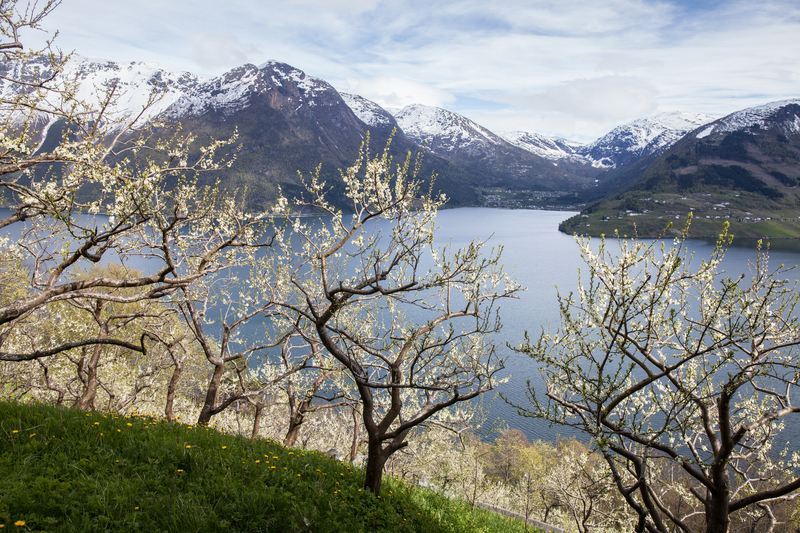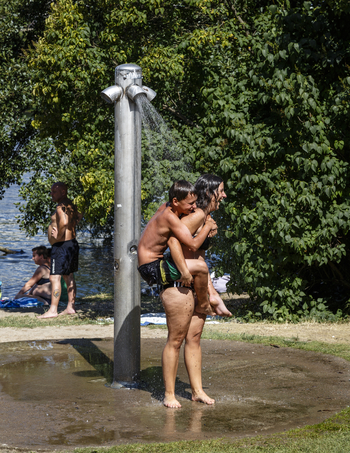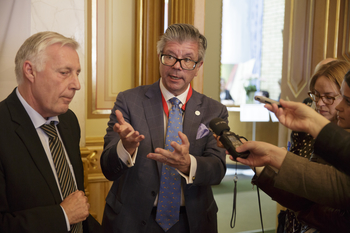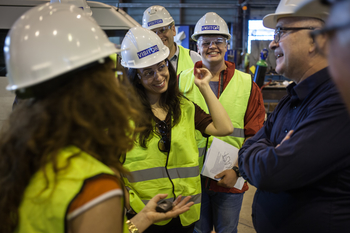Nature, climate and the environment in the Nordic Region

It takes a while to spot them, but suddenly there they are, half-hidden by soft moss – beautiful, fragrant chanterelles. The bag is already full of blueberries, and there are a few nice boletus mushrooms in your basket. Many people in the Nordic Region cherish their foraging walks in the woods in late summer and autumn. Nordic nature offers an abundance of plant life, lakes and rivers teeming with fish, and animals like deer, wild boar and elk.
Even though most people in the Nordic Region live and work in big cities, many of us make the most of our proximity to nature. Most cities in the Region offer easy and direct access to the wild. Every year, people head to the beach to swim in the sea, pick berries and mushrooms in late summer, ski through white, sparkling landscapes, and walk in the woods to gather the first anemones of spring.
However, while Nordic nature is unique and beautiful, it is also delicate – particularly to the north, in the Arctic Circle. Here, plants grow very slowly, and human intervention can only restore the wilderness gradually, if at all. In the more densely populated parts of the Nordic Region, especially in Denmark, there are only a few areas of wilderness left.
Ominous climate change
Ecosystems all over the world are feeling the impact of climate change. The polar regions are likely to bear the brunt and are already showing the effects of climate change. In Greenland in particular, nature and the environment are under enormous pressure. Not only are animals losing their habitats, but people are having to contend with the fact that changing natural conditions will also have an impact on culture and the economy.
More frequent flooding due to heavier rainfall and higher water levels along rivers and coasts are placing a heavy burden on infrastructure and buildings throughout the Nordic Region, which will have economic ramifications.
The changes are happening faster north of the Arctic Circle than in the rest of the world. In recent decades, the average annual temperature in the Arctic has increased twice as fast as in southern latitudes. The Nordic governments are deeply concerned about glaciers and sea ice melting faster than previously expected.
The seas are under pressure
The Nordic Region is surrounded by sea, from the Baltic in the south to the Arctic Ocean in the north. Ever since Viking times, the sea has been both a major transit route and source of food for the people of the Nordic Region. Most Nordic people live in coastal areas. For many people, their quality of life depends upon easy access to the sea. Protecting and preserving marine life is, therefore, high on the agenda in all of the Nordic countries.
Active efforts are being made to ensure the sustainable management of marine resources and to minimise the influx of invasive species and organisms that threaten the marine environment. Marine ecosystems are also under pressure from hazardous substances and shipping. For example, the Baltic Sea is threatened by unusually large algae growth, as a result of which efforts are being made to reduce the levels of nitrogen and phosphorus in the water.
Invasive species like the Russian Kamchatka crab or king crab also pose a serious threat to native species along large parts of the Norwegian coast.
Work on the marine environment is done in close co-operation with international organisations such as the EU and UN, and on the basis of international environmental conventions.
National parks and unspoilt nature
More and more plant and animal species are under threat, and around the world, there are numerous examples of species in decline or even becoming extinct. The Nordic Region is no exception. The Nordic governments have decided to create national parks where nature will be allowed to develop without direct human intervention. Even densely populated Denmark now has national parks, which are necessary to protect and conserve biodiversity.
Tourists from around the world flock to the Nordic Region to experience its unique nature – from Denmark’s sandy beaches to the Norwegian fjords and mountains, Greenland’s icebergs, the Swedish forests and Finland’s thousands of lakes.
More interest in the beauty and tranquillity of nature is positive, of course, but more tourists also mean more pressure on natural habitats – perhaps even a direct threat to them. The term “people pollution” refers to natural sites of high amenity value that attract large numbers of tourists. Several locations in the Nordic countries are actively working to protect nature and the environment and discourage mass tourism.
Health and the environment
In 1989, the Nordic Council of Ministers launched the environmental label “the Swan”, which is now widely used throughout the Region. Products displaying the label are among the least environmentally damaging in their category.
The Nordic countries have a long history of working together on environmental issues, and the label is just one initiative among many. It has long been recognised that environmental issues cannot be treated in isolation, but must be viewed holistically and globally. For example, the Nordic countries work together to protect nature and the environment in the Arctic.
Often, environmental issues also cross over into concerns about public health – e.g. when hazardous substances and chemicals are involved.
As a result, in 2020, products that contain substances that are hazardous to the environment and public health will no longer be permitted on the market. This is an ambitious target for Nordic environmental co-operation on chemicals and will require that we learn more about the chemicals currently in use. Databases of substances and methods of handling them are currently being set up. The results will be used both in the Nordic Region and in international contexts like the UN and the EU.
In addition, the air that we breathe must not contain pollutants that exceed a level damaging to the environment and public health. This will entail a reduction in emissions of harmful particles from industry, big cities and transport. The Nordic countries are also working together on the issue. Researchers are currently collaborating across national borders on the relationship between nature, the environment and public health.
Focus on sustainability
The Nordic Region aims to be at the forefront of efforts to develop clean, resource-efficient and sustainable consumption. Goods and services must not damage the environment or people’s health at any stage of the cycle, from manufacturing to waste product.
“Waste is money” has become a rallying cry for several Nordic industries, which now see recycling and recirculation of waste products as responsible and profitable steps in the right direction. Across the Nordic Region as a whole, work is also being done to encourage both the public and private sector to take the environment into account in their procurement.
The Nordic governments are working to fulfil the climate convention’s long-term objective of stabilising atmospheric greenhouse gases at a level that prevents further damage to the global climate. The Nordic countries are also working with the Baltic states in this area.
The Nordic Council of Ministers’ action plan for Vision 2030
The action plan describes how the Nordic Council of Ministers will work to achieve the objectives of the vision through a series of initiatives linked to the vision’s three strategic priorities: a green Nordic Region, a competitive Nordic Region, and a socially sustainable Nordic Region. There are 12 objectives linked to the strategic priorities. The strategic priorities and objectives govern all the activities of the Nordic Council of Ministers over the next four years. The action plan is divided into 12 sections, each one linked to one of the 12 objectives.




